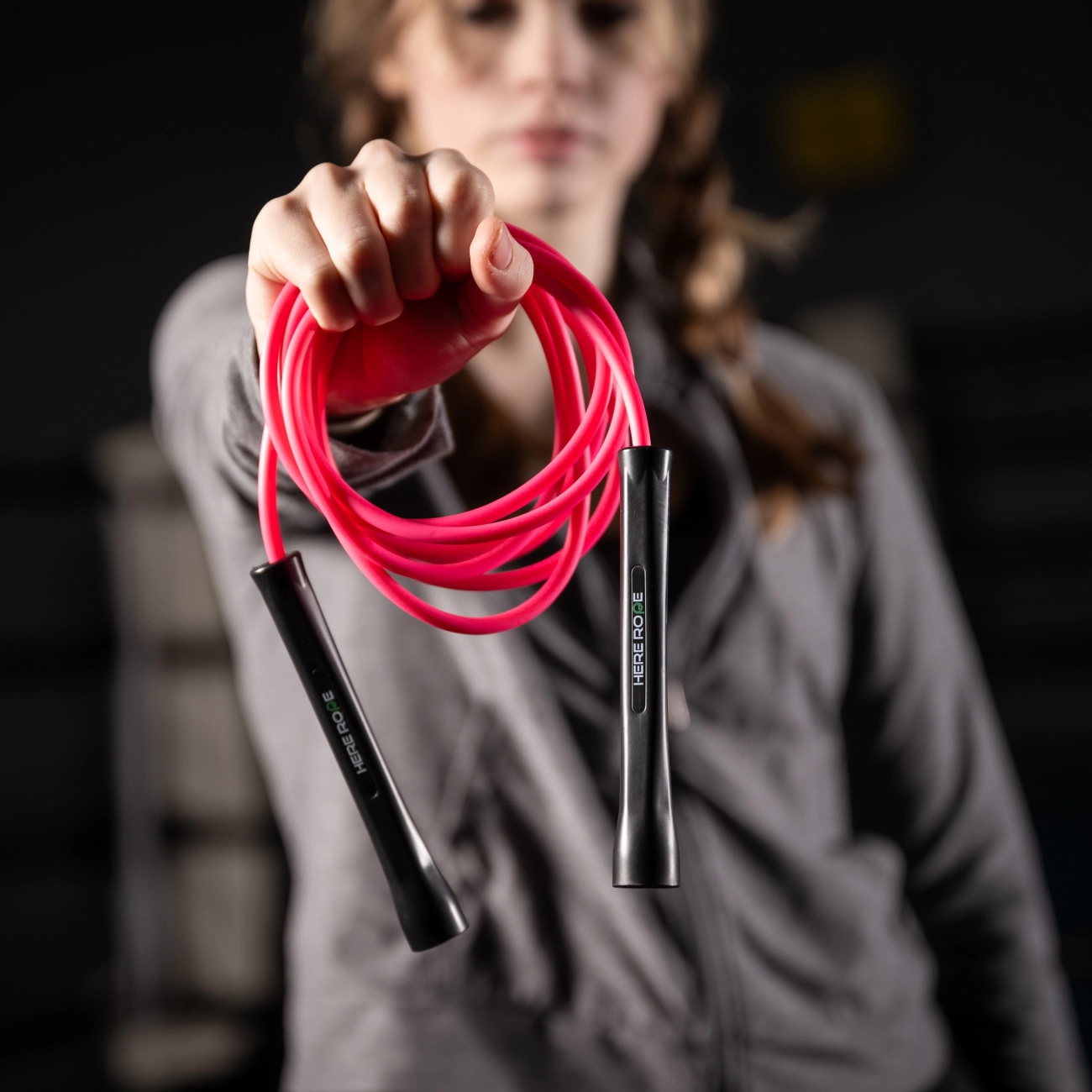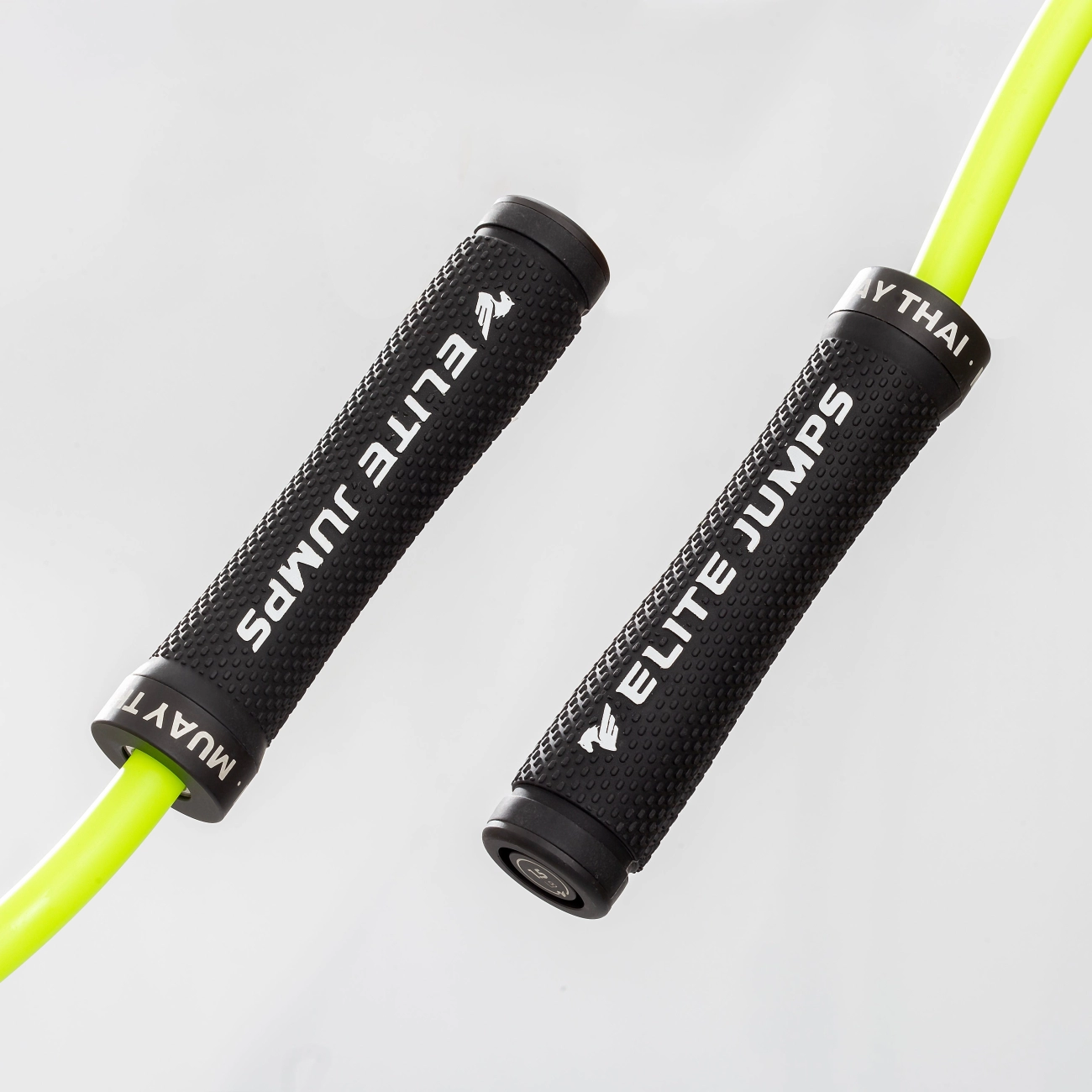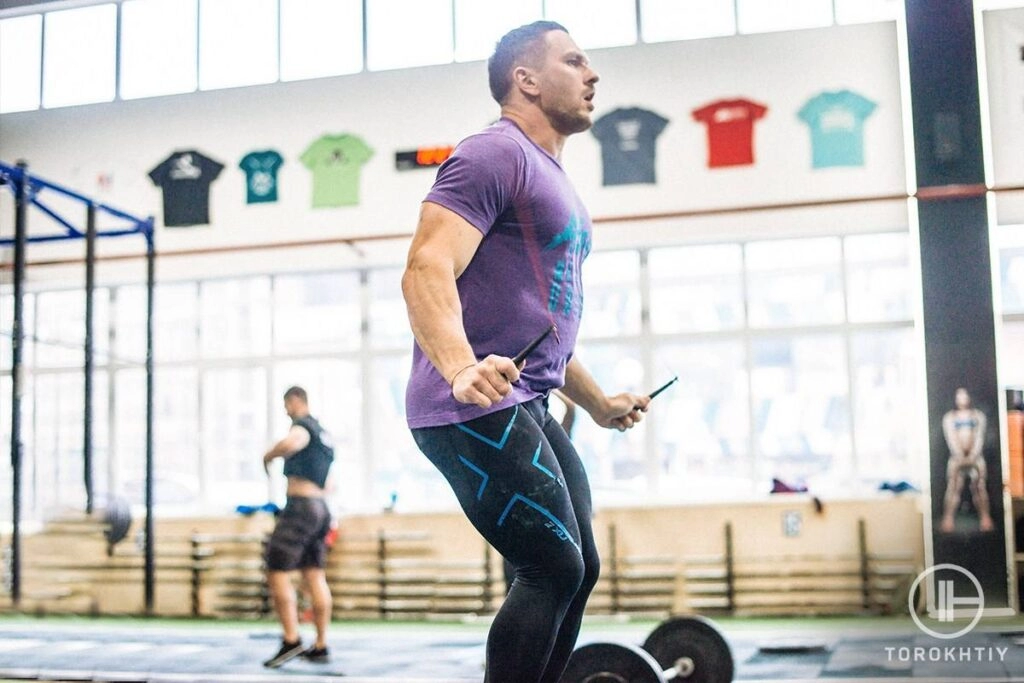Looking to supercharge your fitness routine with a jump rope and weights workout? You’re in the right place! Combining the heart-pumping cardio of a jump rope with the muscle-building power of weights is a game-changer for torching fat, boosting strength, and enhancing endurance—all in less time than you’d think. As a fitness enthusiast, I’ve seen firsthand how this dynamic duo transforms workouts, and I’m sharing practical tips to help you get started. Whether you’re a beginner or a seasoned athlete, this guide, powered by insights from PVCJumpRope.com, will show you how to create an effective, full-body routine that delivers results. Let’s jump in!
Benefits of Combining Jump Rope and Weights Workout
Integrating jump rope cardio and strength training into one workout offers a powerful way to maximize fitness gains. Combining jump rope with weights not only improves cardiovascular health but also boosts muscle strength, coordination, and metabolism.
Cardiovascular Gains from Jump Rope
Jump rope is a highly effective cardio workout that elevates your heart rate quickly, improving endurance and lung capacity. Its fast-paced nature helps increase cardiovascular fitness, making it an excellent warm-up or interval activity to pair with weight training. The rhythmic jumping also enhances balance and agility, key components for overall athletic performance.
Muscle Strengthening Through Weight Training
Weight exercises target and build muscle, improving overall strength and bone density. Incorporating lifts like squats, deadlifts, and dumbbell rows with jump rope intervals creates a balanced routine that enhances both muscular power and endurance. This combination supports better functional movement and injury prevention.
Improved Coordination Balance and Agility
The dynamic movement involved in jump rope trains your neuromuscular coordination, helping your body move more fluidly. When combined with weighted exercises, which demand stable form and control, you develop sharper balance and agility. This synergy improves athletic skill and everyday movement efficiency.
Time-Efficient Full-Body Workout
Jump rope and weights workouts efficiently engage the entire body in less time. You get the benefits of high-intensity interval training (HIIT) along with strength gains, allowing for a complete full-body routine without long hours at the gym. This makes it an ideal approach for busy schedules.
Enhanced Metabolic Rate and Fat Loss
The combination boosts your metabolic rate long after the workout ends. Jump rope’s high-intensity cardio paired with weightlifting’s muscle-building effect promotes greater calorie burn and fat loss. This synergy supports effective weight management and body composition improvements.
By blending jump rope and weights, you enjoy a balanced, efficient, and well-rounded workout that enhances cardiovascular health, muscle strength, coordination, and fat-burning potential. This combination makes for an ideal workout whether you train at home or in the gym.
How to Structure a Jump Rope and Weights Workout

Creating an effective jump rope and weights workout means balancing cardio with strength training while keeping it efficient. Here’s how to set it up right.
Warm Up Essentials for Jump Rope and Weights
Before jumping in, start with a solid warm-up to prep your muscles and heart:
- 5 minutes of light jump rope or brisk walking to raise your heart rate
- Dynamic stretches focusing on hips, shoulders, and ankles
- Basic bodyweight movements like air squats or lunges to activate muscles
- Gradually increase jump rope intensity with simple moves like the basic bounce
Warming up helps reduce injury risk and improves your coordination when you combine jump rope cardio and strength training.
Sample Workout Formats with Jump Rope and Weights
To keep workouts effective and engaging, try one of these popular structures:
1. Circuit Style
- Alternate between 30-60 seconds of jump rope and 1 set of weight exercises like squats or dumbbell rows
- Complete 3-4 rounds with minimal rest between exercises
- Great for boosting endurance and strength in the same session
2. Supersets
- Pair jump rope intervals with a weight exercise targeting a different muscle group
- Example: 1 minute jump rope followed by 10 push-ups, repeat 3 times before moving to next pair
- This keeps your heart rate up and maximizes workout density
3. Interval Training
- Perform high-intensity jump rope bursts (20-40 seconds), then rest briefly (10-20 seconds)
- Follow with a weighted strength set focusing on form and controlled reps
- Repeat for 20-30 minutes for a full-body fat-burning session
Rest and Recovery Tips
Balancing work and rest is key, especially when combining jump rope HIIT with weight exercises:
- Take 30-60 seconds rest between circuits or supersets to recover without cooling down too much
- Schedule at least 1-2 rest days per week to allow muscles and joints to recover fully
- Use light stretching, foam rolling, or yoga on rest days to aid recovery and maintain flexibility
- Stay hydrated and maintain proper nutrition to fuel your workout and recovery
By structuring your jump rope and weights workout thoughtfully, you maximize the benefits of both cardio and strength training, all while saving time and staying injury-free.
Effective Jump Rope Techniques for Your Jump Rope and Weights Workout
Using the right jump rope techniques is key to maximizing your jump rope cardio and strength training sessions. Here are some simple but effective jump rope moves that fit perfectly into a full-body workout with jump rope and weights.
Basic Bounce
- Description: Jump on both feet together with a light, quick bounce.
- Why it works: Builds rhythm, improves coordination, and is beginner-friendly.
- Tip: Keep elbows close to your sides and turn the rope with your wrists, not your arms.
Alternate Foot Step
- Description: Mimics jogging in place, alternating your feet with each jump.
- Benefits: Adds variety and increases heart rate for a jump rope HIIT effect.
- Tip: Land softly on balls of your feet to reduce impact and stay light on your toes.
High Knees
- Description: Bring your knees up to waist height while jumping rope.
- Effective for: Developing core strength, boosting cardio, and enhancing coordination.
- Tip: Keep a steady pace and maintain an upright posture.
Tips for Maintaining Rhythm and Avoiding Injury
- Start slow to build rhythm before increasing speed.
- Use a PVC jump rope for consistent rotations that help maintain timing.
- Keep a slight bend in your knees to absorb shock.
- Focus on landing softly to protect your joints.
- Warm up properly before starting any intense session to reduce injury risk.
Why PVC Jump Ropes Are Ideal for Durability and Speed
- Durable material: PVC ropes handle regular workouts without fraying or breaking.
- Lightweight and fast: Perfect for quick rotations needed in jump rope HIIT and combined jump rope and dumbbell routines.
- Adjustable length: Fits all heights, making it an excellent choice for everyone.
- Affordable and reliable: Ideal for at-home jump rope and weights workouts without needing expensive gear.
Using these effective jump rope techniques and a quality PVC jump rope can elevate your training, making your jump rope and weights workout more efficient, safe, and enjoyable.
Best Weight Exercises to Pair with Jump Rope for Full Body Strength

Combining jump rope cardio with effective weight training creates a balanced, full-body workout. To maximize your results, focus on compound movements that engage multiple muscle groups and complement the high-intensity jump rope intervals.
Key Compound Weight Exercises to Pair with Jump Rope
-
Squats
Targets: quads, hamstrings, glutes, core
Why: Squats build lower body strength and stability, crucial to support the plyometric nature of jump roping. -
Deadlifts
Targets: hamstrings, glutes, lower back, core
Why: Deadlifts improve overall posterior chain strength, enhancing posture and injury resilience when jumping. -
Push-ups
Targets: chest, shoulders, triceps, core
Why: Push-ups develop upper body strength without equipment, providing balance to the jumping motion. -
Dumbbell Rows
Targets: upper back, biceps, core
Why: Rows strengthen your back muscles, which helps maintain good form during jump rope and prevents muscular imbalances.
Target All Major Muscle Groups
Your jump rope and weights routine should hit every major muscle group for a well-rounded workout:
- Lower Body: Squats, Deadlifts
- Upper Body: Push-ups, Dumbbell Rows
- Core Stability: Planks, Russian Twists (optional)
This balance ensures that cardiovascular fitness from jump rope is supported by muscular strength and endurance.
Use Bodyweight and Free Weights
- Bodyweight exercises like push-ups and air squats are perfect for beginners or when you want a quick at-home session.
- Free weights such as dumbbells or kettlebells add resistance, helping you build muscle and strength faster.
You can scale your workout based on your level by adjusting the weight or reps.
Modifications for Every Level
- Beginners: Start with bodyweight moves, light dumbbells (5-10 lbs), and shorter jump rope intervals (30 seconds).
- Intermediate: Mix moderate weights (10-25 lbs), longer jump rope sets (45-60 seconds), and progress reps to build stamina.
- Advanced: Use heavier weights, superset weights with jump rope HIIT intervals, and increase jump rope speed and complexity (high knees, alternate foot steps).
Pairing jump rope cardio with smart weight exercises like squats, deadlifts, push-ups, and dumbbell rows creates an efficient, full-body workout. This combination boosts your strength, endurance, and fat-burning potential—perfect for anyone aiming for balanced fitness at home or in the gym.
Sample Jump Rope and Weights Workout Plan for All Levels
Combining jump rope and weights in a workout is a smart way to get cardio and strength training all in one session. Whether you’re just starting or looking to challenge yourself, here’s a simple breakdown of routines for beginner, intermediate, and advanced levels with clear sets, reps, and timing. You’ll also learn how to track your progress effectively.
Beginner Jump Rope and Weights Routine
- Warm-up: 3-5 minutes of basic jump rope (basic bounce)
- Workout Format: Circuit style, 3 rounds
- Jump rope 30 seconds (basic bounce or alternate foot step)
- Bodyweight squats 12 reps
- Dumbbell rows 10 reps each arm (light weight)
- Push-ups 8-10 reps
- Rest 60 seconds between rounds
Total time: About 20-25 minutes
Focus: Build endurance, coordination, and basic strength while developing rhythm.
Intermediate Routine
- Warm-up: 5 minutes jump rope including high knees and alternate foot step
- Workout Format: Superset style, 4 rounds
- Jump rope intervals: 45 seconds work, 15 seconds rest
- Dumbbell deadlifts 12 reps (moderate weight)
- Jump rope 45 seconds
- Push-ups or dumbbell chest press 12 reps
- Kettlebell swings 15 reps
- Rest 45 seconds between rounds
Total time: 30-35 minutes
Focus: Increase strength and cardiovascular intensity.
Advanced Routine
- Warm-up: 7 minutes jump rope mixing all advanced techniques
- Workout Format: HIIT style, 5 rounds
- Jump rope 60 seconds (high knees or fast alternate foot step)
- Barbell or heavy dumbbell squats 15 reps
- Dumbbell rows 12 reps per arm (heavy weight)
- Burpees or jump lunges 15 reps
- Rest 30 seconds between rounds
Total time: 40 minutes
Focus: Maximize fat burning, strength, and explosive power
Measuring Your Progress
To see real improvement in your combined jump rope and weight workout:
- Track jump rope duration and speed (start with shorter intervals and increase over time)
- Increase weight load gradually while maintaining good form
- Record number of reps per set and aim to improve each week
- Monitor recovery time – shorter rest indicates better fitness
- Consider using a PVC jump rope like the Adjustable PVC Jump Rope for durability and speed as your skills improve
Following a structured, progressive plan keeps you motivated and helps balance cardio with strength training, making your workouts more effective overall.
Essential Equipment for Your Jump Rope and Weights Workout
Having the right gear makes all the difference when combining jump rope cardio and strength training. Here’s what you need to get the most out of your full-body workout with jump rope and weights.
Why a Quality PVC Jump Rope Matters
A durable PVC jump rope is key for smooth, fast, and consistent jumping. PVC ropes are:
- Lightweight yet strong, so they hold up to daily workouts.
- Ideal for speed and endurance training thanks to their smooth rotation.
- Perfect for both beginners and advanced jumpers, minimizing wrist strain.
Check out PVCJumpRope.com where you can find high-quality, customizable PVC jump ropes designed for fitness lovers across the United States. Their ropes blend durability with speed, making them a smart choice for your jump rope HIIT and weight exercises.
Recommended Weights for Strength Training
To balance your jump rope routine, you’ll need reliable weights that fit your workout style:
- Dumbbells: Great for a wide range of compound movements like dumbbell rows and squats. Adjustable sets let you increase your intensity gradually.
- Kettlebells: Excellent for dynamic, full-body exercises such as kettlebell swings and deadlifts.
- Resistance Bands: Perfect for adding variable resistance; good for home workouts and beginners or anyone needing joint-friendly options.
Using a mix of these tools covers all major muscle groups effectively in your combined jump rope and dumbbell routine.
Comfortable Attire and Safety Gear
Don’t underestimate the importance of what you wear:
- Footwear matters: Use cross-trainers or lightweight sneakers that give good cushioning and support for jumping and lifting.
- Breathable clothing: Keeps you cool and comfortable during intense intervals.
- Safety gear: Wrist wraps or gloves can help protect your joints when lifting heavier weights. And always use a non-slip surface or mat when jumping rope to prevent injuries.
- Invest in a high-quality PVC jump rope from trusted suppliers like PVCJumpRope.com.
- Choose weights like dumbbells, kettlebells, and resistance bands that match your fitness level and goals.
- Wear comfortable, supportive workout clothes and shoes.
- Use safety gear when needed to protect joints and avoid injury.
With the right equipment, your jump rope and weights workout will be efficient, enjoyable, and safe—perfect for your fitness journey in the U.S.
Safety Tips for Jump Rope and Weights Workout
When combining jump rope cardio and strength training, staying safe is key to making progress without setbacks. Here’s what you need to watch out for.
Use Proper Form to Prevent Injury
- Jump Rope Technique: Keep your jumps low and light to reduce impact on your knees and ankles. Land softly on the balls of your feet, and avoid excessive bending of the knees.
- Weightlifting Form: Always maintain a straight back during squats, deadlifts, and dumbbell exercises. Engage your core to support your spine and avoid twisting motions that could cause strain.
- Warm-Up and Cool-Down: Start every session with jump rope warm-up drills and dynamic stretching. End with slow stretches to help muscles recover and reduce soreness.
Avoid Overtraining and Burnout
- Listen to Your Body: Doing jump rope and weights every day without rest can lead to fatigue and injury. Aim for 3-4 sessions per week combining jump rope HIIT and weight exercises.
- Rest Days Matter: Take at least one full rest day per week, and use light activity like walking or yoga to help recovery.
- Mix Intensity: Alternate between high-intensity jump rope intervals paired with heavy lifting, and lighter cardio or mobility days. This keeps your workouts balanced and sustainable.
Stay Hydrated and Fuel Properly
- Drink Water Regularly: Jump rope workouts and weight training both demand hydration — dehydration disrupts performance and increases injury risk.
- Eat Balanced Meals: Focus on protein for muscle repair, carbs for energy, and healthy fats to support overall recovery. Timing nutrition around your workouts can improve endurance and fat-burning results.
- Avoid Working Out Hungry or Overfed: Jumping rope on a full stomach or skipping meals can cause discomfort or low energy.
Common Mistakes to Avoid
- Skipping Warm-Ups: Jumping straight into fast rope sessions or heavy lifts puts you at risk of injury and poor performance.
- Using Poor Equipment: A bad jump rope can trip you up, literally. Choosing a quality PVC jump rope designed for durability and speed (like ones from PVCJumpRope.com) helps maintain rhythm and safety.
- Ignoring Pain: Sharp or persistent pain during jump rope or lifting is a warning sign. Stop, assess, and if needed, get professional advice.
- Lack of Progression: Sticking to the same easy routine won’t cut it. Gradually increase jump rope speed, weight load, or workout duration to keep improving.
- Overlooking Recovery: Not giving muscles time to rebuild leads to burnout, injuries, and stalled progress.
By focusing on proper form, balanced training, hydration, and smart recovery, you’ll make the most of your combined jump rope and weights workout safely and effectively.
Frequently Asked Questions about Jump Rope and Weights Workout
How often should I do jump rope and weights workouts
For most people, 3 to 4 sessions per week combining jump rope cardio and strength training is ideal. This frequency allows enough stimulus for muscle growth and cardiovascular improvement while giving your body time to recover. Beginners might start with 2 sessions weekly, gradually increasing as endurance and strength improve. Consistency beats intensity at first, so focus on building a habit rather than pushing too hard too fast.
Can these workouts help with weight loss
Yes, combining jump rope and weight exercises is highly effective for fat-burning and boosting metabolism. Jump rope HIIT increases your heart rate fast, while weight training helps build muscle, which in turn burns more calories even when you’re resting. Together, they create a powerful combo that supports lasting weight loss by improving both aerobic capacity and overall strength. However, results depend on maintaining a balanced diet alongside your workout routine.
How to choose the right PVC jump rope for your workout
Picking the right PVC jump rope is key for smooth, efficient training:
- Weight and thickness: A thinner, lighter PVC rope spins faster and is perfect for speed and cardio-focused jump rope workouts. Thicker ropes offer more resistance, which can better complement strength training days.
- Length: The rope should reach roughly your armpits when you stand on it. Too long or too short can throw off your rhythm and form.
- Handles: Look for comfortable, non-slip grips that fit your hand well for better control.
- Durability: Opt for quality PVC jump ropes that resist wear and tear, especially if you plan to train indoors and outdoors.
At PVCJumpRope.com, we recommend our premium durable, fast-spinning PVC jump ropes designed for both beginners and advanced users who want a reliable rope that holds up over time.
By following these guidelines, you’ll get the most out of your combined jump rope and weights workout to stay fit, coordinated, and strong.



